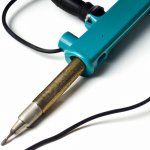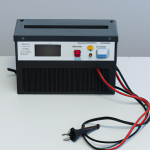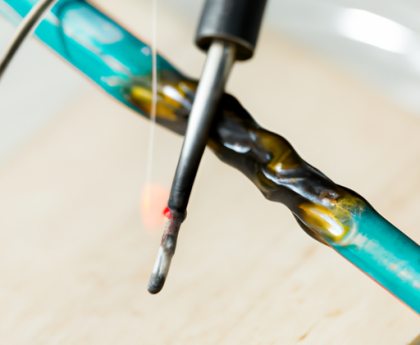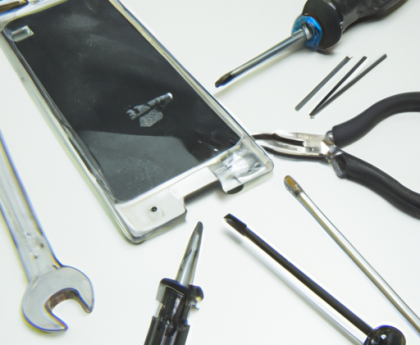“Grip it right with antistatic tweezers – no static shock!”
Introduction
Antistatic tweezers are a type of tweezers designed to reduce the risk of static electricity buildup when handling sensitive electronic components. They are commonly used in the electronics industry for assembling and repairing circuit boards, as well as in laboratories for handling small parts. Antistatic tweezers are made from a variety of materials, including stainless steel, plastic, and ceramic. They are designed to be non-conductive and have a special coating that helps to dissipate static electricity. Antistatic tweezers are an essential tool for anyone working with sensitive electronic components.
How to Properly Use Antistatic Tweezers to Avoid Damage to Sensitive Electronics
Using antistatic tweezers is an important part of handling sensitive electronics. Antistatic tweezers are designed to reduce the risk of electrostatic discharge (ESD) when handling sensitive components. To ensure that no damage is done to the electronics, it is important to use antistatic tweezers properly.
First, it is important to make sure that the tweezers are properly grounded. This can be done by connecting the tweezers to a grounding mat or other ESD-safe surface. This will help to ensure that any static charge that builds up on the tweezers is safely discharged.
Second, it is important to handle the tweezers carefully. Avoid touching the tips of the tweezers with your fingers, as this can transfer static charge to the tweezers. Additionally, avoid dropping the tweezers, as this can cause them to become damaged or misaligned.
Third, it is important to use the tweezers correctly. When handling sensitive components, use the tweezers to gently grasp the component and lift it away from the circuit board. Do not use the tweezers to pry or force components off of the board, as this can cause damage to the component or the board itself.
Finally, it is important to store the tweezers properly. When not in use, store the tweezers in an ESD-safe container. This will help to ensure that the tweezers remain free of static charge and are ready for use when needed.
By following these steps, you can ensure that antistatic tweezers are used properly and that no damage is done to sensitive electronics.
The Benefits of Using Antistatic Tweezers for Electronics Repair
The use of antistatic tweezers is essential for any electronics repair job. Antistatic tweezers are designed to reduce the risk of electrostatic discharge (ESD) when handling sensitive electronic components. ESD can cause permanent damage to delicate electronic components, so it is important to use the right tools when working on electronics.
Antistatic tweezers are made from a special material that is designed to reduce the risk of ESD. This material is usually a combination of plastic and metal, which helps to dissipate any static charge that may be present. The tweezers also have a special coating that helps to reduce the risk of ESD even further.
The use of antistatic tweezers can help to reduce the risk of ESD when handling delicate electronic components. This is especially important when working on circuit boards, as the static charge can cause permanent damage to the components. The tweezers also help to reduce the risk of accidental damage to the components, as they are designed to be gentle and precise.
Antistatic tweezers are also useful for removing small components from circuit boards. The tweezers are designed to be able to grip small components without damaging them, which can be difficult with other tools. This makes them ideal for removing components such as resistors and capacitors.
Overall, antistatic tweezers are an essential tool for any electronics repair job. They are designed to reduce the risk of ESD and accidental damage to delicate components, and they are also useful for removing small components from circuit boards. For these reasons, antistatic tweezers are an invaluable tool for any electronics repair job.
The Different Types of Antistatic Tweezers and Their Uses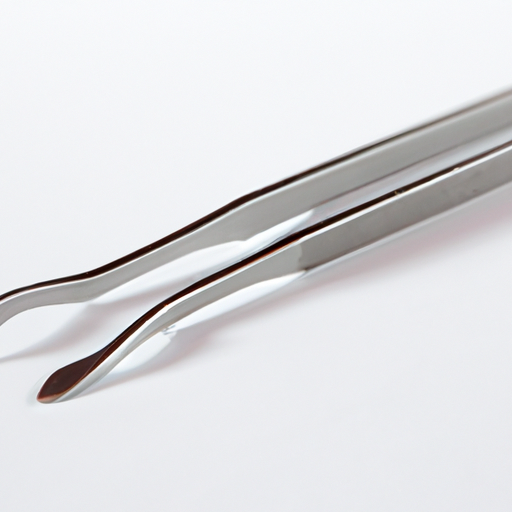
Antistatic tweezers are a type of tweezers designed to reduce the risk of electrostatic discharge (ESD) when handling sensitive electronic components. They are commonly used in the electronics industry to safely handle and assemble delicate components. Antistatic tweezers come in a variety of shapes and sizes, each designed for a specific purpose.
The most common type of antistatic tweezers are straight tweezers. These tweezers have a straight, pointed tip and are used for precision work such as picking up and placing small components. They are also useful for removing dust and debris from delicate surfaces.
Curved tweezers are another type of antistatic tweezers. These tweezers have a curved tip and are used for gripping and manipulating larger components. They are also useful for removing stubborn debris from hard-to-reach places.
Pointed tweezers are a type of antistatic tweezers with a sharp, pointed tip. These tweezers are used for precision work such as soldering and desoldering components. They are also useful for removing small components from circuit boards.
Flat tweezers are a type of antistatic tweezers with a flat, wide tip. These tweezers are used for gripping and manipulating larger components. They are also useful for removing stubborn debris from hard-to-reach places.
Finally, bent tweezers are a type of antistatic tweezers with a bent tip. These tweezers are used for gripping and manipulating components in tight spaces. They are also useful for removing stubborn debris from hard-to-reach places.
In conclusion, antistatic tweezers come in a variety of shapes and sizes, each designed for a specific purpose. Straight tweezers are used for precision work, curved tweezers are used for gripping and manipulating larger components, pointed tweezers are used for soldering and desoldering components, flat tweezers are used for gripping and manipulating larger components, and bent tweezers are used for gripping and manipulating components in tight spaces.
How to Clean and Maintain Antistatic Tweezers for Optimal Performance
Antistatic tweezers are an essential tool for many industries, including electronics, medical, and laboratory work. Properly cleaning and maintaining antistatic tweezers is essential for optimal performance. This article will provide a step-by-step guide on how to clean and maintain antistatic tweezers.
Step 1: Clean the Tweezers
Before cleaning the tweezers, make sure to wear protective gloves and safety glasses. Use a soft cloth to wipe away any dirt or debris from the tweezers. If necessary, use a mild detergent and warm water to remove any stubborn dirt or grime. Make sure to rinse the tweezers thoroughly and dry them with a soft cloth.
Step 2: Inspect the Tweezers
Inspect the tweezers for any signs of wear or damage. If any damage is found, replace the tweezers immediately.
Step 3: Apply Antistatic Coating
Apply an antistatic coating to the tweezers. This will help to reduce the buildup of static electricity and ensure optimal performance.
Step 4: Store the Tweezers Properly
Store the tweezers in a dry, dust-free environment. Make sure to keep the tweezers away from any sources of heat or moisture.
By following these steps, you can ensure that your antistatic tweezers are properly cleaned and maintained for optimal performance. Proper cleaning and maintenance of antistatic tweezers is essential for any industry that relies on them.
The Best Practices for Working with Antistatic Tweezers in a Cleanroom Environment
When working in a cleanroom environment, it is important to take the necessary precautions to ensure that the environment remains free from contamination. Antistatic tweezers are a common tool used in cleanrooms, and it is important to follow best practices when using them.
First, it is important to ensure that the tweezers are properly grounded. This can be done by connecting the tweezers to a grounding cord or by using an antistatic mat. This will help to prevent static electricity from building up and potentially damaging sensitive components.
Second, it is important to use the tweezers in a manner that minimizes the risk of contamination. This means avoiding contact with any surfaces that may be contaminated, such as the floor or walls. It is also important to avoid touching the tweezers with bare hands, as this can introduce contaminants into the cleanroom environment.
Third, it is important to use the tweezers in a manner that minimizes the risk of damage to components. This means avoiding contact with any sharp edges or surfaces, as this can cause damage to the components. It is also important to use the tweezers in a manner that minimizes the risk of dropping components, as this can also cause damage.
Finally, it is important to ensure that the tweezers are properly cleaned and maintained. This means regularly cleaning the tweezers with an appropriate cleaning solution and inspecting them for any signs of wear or damage. It is also important to store the tweezers in a manner that prevents them from becoming contaminated.
By following these best practices, it is possible to ensure that antistatic tweezers are used safely and effectively in a cleanroom environment. This will help to ensure that the environment remains free from contamination and that components remain undamaged.
Conclusion
Antistatic tweezers are an essential tool for any electronics technician or hobbyist. They are designed to reduce the risk of static electricity damaging sensitive components, and are available in a variety of sizes and shapes to suit different needs. With their ability to safely handle delicate components, antistatic tweezers are an invaluable tool for anyone working with electronics.


